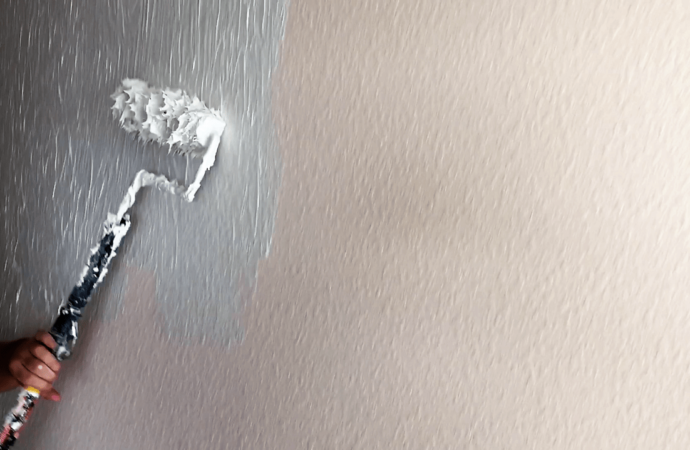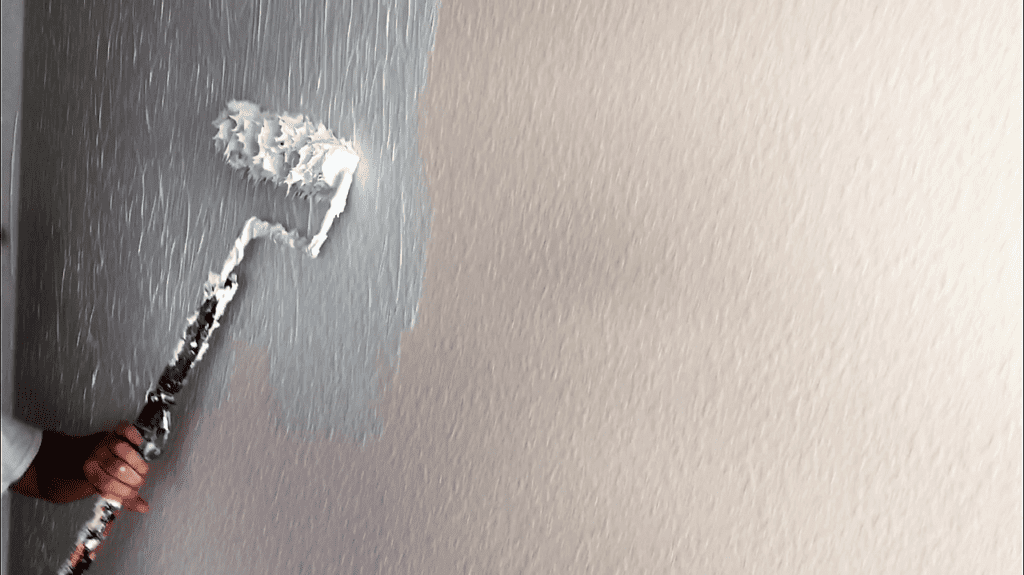Texturing walls can add personality and style to any room. Knockdown textures, in addition to adding color to a room, can add dimension and flair. There are many wall textures available. You can find one that reflects your taste from Boca Raton Popcorn Ceiling Removal & Drywall Repair Group. Using these DIY techniques, you can easily add texture to dull or uninteresting walls. This project can be fun, and you will reap the benefits of adding wall textures to your rooms. Hidden imperfections – Your walls may have seen a lot over the years. You want a simple solution to conceal a few flaws. Adding texture is a great option. It’s simple to do and hides any blemishes caused by wear. Additional Protection – This project will save you the time and effort of painting walls every few years. Texturing provides extra protection, which lasts longer and is less susceptible to damage than plain walls. Soundproofing – Texturing your walls can soften the sound between rooms. This makes it a natural choice for bedrooms and living rooms. Depth – While smooth walls are more common in modern interiors, adding texture to walls can give a room more depth and uniqueness. Popcorn is the most popular wall texture in the 1970s but remains popular today when it comes time to spice up your home. You can do this DIY project yourself, and it is affordable. This texture can add dimension and grandeur to your space. It’s also a natural choice if you want to soundproof. This texture can be applied to your ceilings or walls, and they will look great. First, purchase the popcorn texture mix. Then, use a texture sprayer and compressor to apply the mixture. It is challenging to remove the popcorn texture, but you can cover it with another layer of drywall. The orange peel wall texture looks just like the orange rind. This texture is popular because it is much more flexible than popcorn yet still adds a unique detail to your walls. Orange peel texture works well in larger rooms because it is subtler. It adds a beautiful touch to your living, dining, and bedroom. This texture mix can be created using a texture sprayer and compressor. You will need to thin drywall mud with water. After applying the texture, roll it with a roller to smoothen it. Then apply another coat. Knockdown wall texture will work well if you want to give your room a stucco feel. This texture is excellent for rustic interiors. It doesn’t take much effort or precision. This wall texture adds a modern touch to your walls. It can be customized to your specifications. You can add a busy texture to your walls or keep it simple, depending on what look you want. The wall texture can be applied to any room and is easy to use. You would follow the same steps for an orange peel wall as for knockdown walls. However, there is an extra step. You can apply this texture to a larger area by gently flattening the orange peel texture with a knife. If you use it in a smaller space, wait at least 10 minutes before beginning the flattening. Due to its versatility and adaptability, the combed texture has recently seen a massive rise in popularity. You can make different shapes and lines depending on your preference. Rainbow is the most common comb wall texture, but you also have options to create lines that are straight, circular-like, or random. This will make your walls stand out from other art pieces. The project is best done with two men. One can make the pattern with a trowel, and the other can apply the drywall mud to the wall using a sprayer or a roller. You can make endless designs with the sand swirl wall texture by combining two of the most popular techniques, comb and sand spray. Although this DIY project is not challenging, it requires two people to do it. One applies drywall mud mixed with sand to your wall, while the other creates the design. This texture can be created with a thick bristled brush or in half-rows. You might want to practice on a piece of spare drywall before you start the project. This is especially important if you prefer a cleaner look. However, a messy design can add beauty to your home. Before you paint, you must wait at least 24 hours after applying the texture to your walls. The slap brush technique can create wall textures that are easy to apply with a brush. This technique is easy to use and can make a beautiful statement in any room. Texturing walls is a great way to express your creativity and have fun. You will get different patterns depending on which brush you use. Make sure you test it out before you start texturing. Before you apply the first coat to your wall, take your slap brush and apply thin coats to both sides of your brush. To create different patterns with your brush, twist and turn them. You can also work in sections. The next day, paint your wall. This technique is perfect for people who prefer a more subtle slap brush look to their walls. The slap brush knockdown is smoother if you prefer a softer, less uneven finish to your walls than visible lines. You will need the same tools you used for the slap brush one and a finishing knife. After applying your first coat of drywall compound, mix it with water, and then proceed to slap brushing. You should wait 10-15 minutes if you are texturing walls in a small space. However, if you are working with a larger canvas, you don’t have to wait as long. It would be best to stay at least one day before applying color. The skip trowel texture can be created with a large, curved knife and is easily applied by one person. Once you are comfortable with the technique, the trickiest part is how the drywall mud will behave. It will likely drip off or fall off walls if it is too thin and runny. It will be impossible to design anything if it is too thick. It’s not rocket science when it comes to this technique. You can apply the drywall glue to your walls and ensure your knife is at an angle. This will create a unique design that looks great in larger rooms. The skip trowel technique can be combined with metallic paint to create a focal point for your home and your favorite piece of art. The crow’s feet technique is similar to the slap brush technique. It looks like crow’s feet and can be used in many homes, including modern ones. This technique is one I love, and it looks different depending on which brush you use. A stiff-bristled brush is required, and your drywall glue. You can apply your drywall mud directly on the wall without needing to coat it. Move your brush left to right. Create a soft “C,” then move upwards. For best results, work in sections or rows. This technique can be achieved easily with a stomp brush. Your drywall mud and a stomping brush are required. The longer brush bristles will make it easier to apply the drywall mud to your wall. Your brush should be soaked in drywall mud. You will then work your way up, stamping the wall with your brush. Continue this process until your wall is covered in the desired texture. Knockdown can be used in combination with any other technique. This is especially popular for those who prefer a more superficial texture but still want it. Using thicker drywall glue, the stomping brush can make things look very dramatic. You can tone it down by applying the knockdown technique after. Use your finishing knife to smoothen the texture. If you’re applying the texture to a smaller space, please wait at least 10 minutes before using the knockdown technique. You can finish the rosebud technique with either a stomp or simple slap brush, depending on what look you want. This texture is similar to a rosebud, hence the name. You can create a petal-like design by rubbing your brush against the wall, creating a circle, and then repeating the process with a stomp brush. This will look great in homes with rustic decor. This technique is more complex than the others, so practice it first on some spare drywall. This texture is also known as “Spanish Lace,” but it’s one of the most difficult to create. It’s well worth the effort. The lace texture can be made on walls in one or multiple colors. Although the final result will be very different, the process is not much different. To achieve this look, you will need first to add color to the first coat of drywall glue. Then, use the lace technique to apply another color. To get the best results and last a long time, ensure that your drywall mud consistency is not too thin or too runny. You can apply splatters with a sprayer in thin lines to look like lace. If you prefer a non-multicolored look, you can add another coat of splatter to make it even more unique. Wait at least one day before you paint your walls. We offer the above services at the following locations within Boca Raton:
If you are located in Palm Beach County and you don’t see your city/area listed above, don’t worry! We cover all of Palm Beach County. Fill out the contact form above or CLICK HERE and send us a message. We’ll get back to you asap!
Knockdown Textures
Contact Us

Why not add texture to your walls!
Popcorn
Orange Peel
Knockdown

Comb
Sand Swirl
Slap Brush
Slap Brush + Knockdown
Skip the Trowel
Crow’s Feet
Stomp Brush
Stomp Brush + Knockdown
Rosebud
Lace
Locations We Serve

